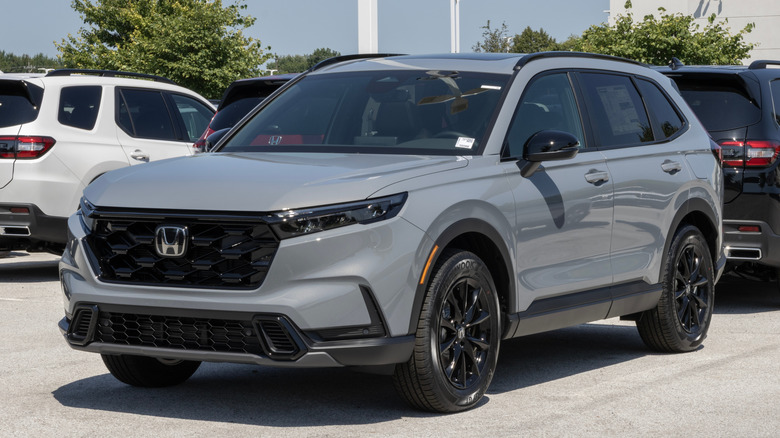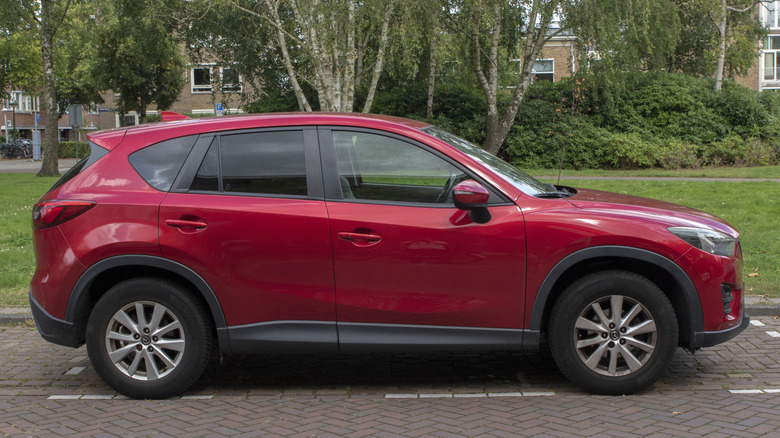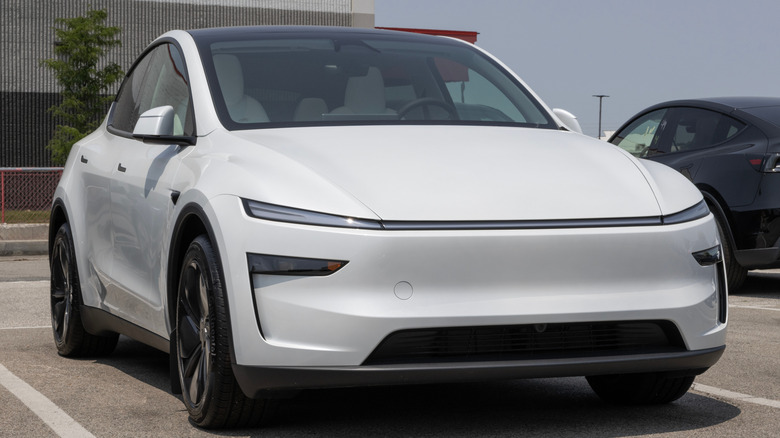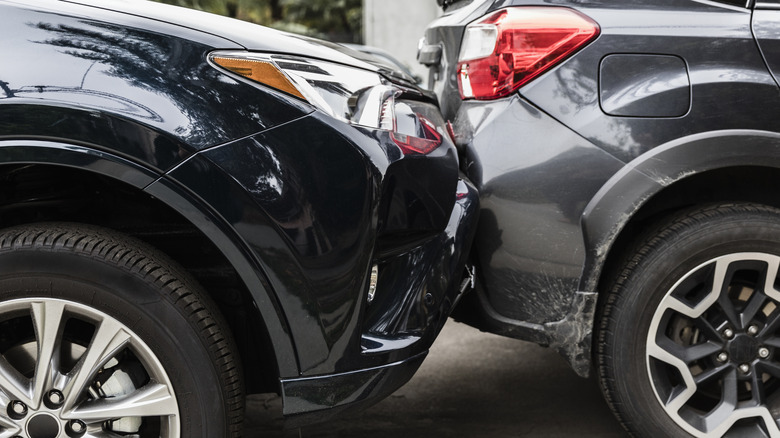These Are The Cheapest SUVs To Insure, According To LendingTree
Sticker shock doesn't always happen at the dealership when buying a new car. In all the excitement, it's easy to overlook the cost of insurance. However, some research before signing on the dotted line may help avoid surprises when protecting your new ride. It's a wise move, as CNBC reports that a full-coverage car insurance policy costs 12% more in 2025 than last year and is up 50% since 2020. Through its ValuePenguin research arm, LendingTree got right to the heart of the matter with a study comparing insurance costs for popular SUVs.
The Honda CR-V earned bragging rights as the least expensive SUV to insure, with an average annual cost of $2,669. Buyers of its smaller stablemate, the HR-V, can expect to pay slightly more, at $2,681. Completing the podium for cheap insurance is the Chevrolet Traverse, with an annual insurance bill of $2,760. Only the Traverse and Honda Pilot offer three-row seating among the top ten vehicles on LendingTree's list.
More SUVs with cheaper insurance rates
The rest of the top ten cheapest SUVs to insure also come from mainstream brands. These mostly two-row crossovers include the Mazda CX-5, Honda Pilot, Ford Escape, Chevrolet Equinox, Volkswagen Tiguan, Subaru Outback, and Subaru Forester. Insurance for these vehicles falls into a narrow range, from $2,792 to $2,913. That's a $121 gap, making insurance costs an unlikely reason to favor one model over another. Arguably, older Outbacks fall into station wagon territory, but the all-new 2026 Subaru Outback leans further into the SUV realm.
Meanwhile, the Jeep Wrangler sits at number 11 with an annual policy cost of $2,969. Average insurance premiums for America's most popular SUV, the Toyota RAV4, cross the $3,000 mark ($3,015 to be precise), followed closely by the Jeep Cherokee ($3,033) and Ford Explorer ($3,037). The three-row Explorer costs $277, or 10%, more to insure than its Detroit rival, the Chevrolet Traverse. The Honda Pilot's premium, at $2,811, is 8% cheaper than the Explorer's.
High insurance costs for the Tesla Model Y
Turning to pricier SUVs to insure, the Tesla Model Y ranks 20th out of 20 with the highest premium. Its average annual cost of $4,296 is 61% higher than the CR-V's. To put that number further into perspective, the Toyota 4Runner ranks 19th for SUV coverage cost, but its premium averages a much cheaper $3,153. So, the difference between the first and nineteenth vehicles in ValuePenguin's survey is $484. At the same time, $1,143 separates the Model Y and the 4Runner, despite being one place apart in the rankings.
A Tesla primarily costs more to insure due to higher repair costs. Spare parts are more expensive and harder to come by, and fewer repair shops can work on these vehicles. Repairs involving a Tesla's high-voltage battery require specialized skills. Higher MSRPs also contribute to more expensive premiums. For the 2025 model year, the cheapest Honda CR-V is $31,495 (including $1,395 in destination fees), while a new Tesla Model Y starts at $46,630 (including $1,390 in destination fees and a $250 order fee).
The remaining SUVs in the study (and average insurance costs) are the Hyundai Tucson ($3,037), Nissan Rogue ($3,045), Toyota Highlander ($3,046), and Jeep Grand Cherokee ($3,090).
Why insurance costs differ among SUVs
Many elements determine what insurance companies charge for auto coverage. Before driver factors enter the picture, insurers look at a vehicle's expected claim frequency and severity. In simple terms, this means some cars tend to have cheaper or fewer claims. So, they're less expensive to insure. For example, the Honda CR-V has 41% fewer collision losses, according to the Insurance Institute for Highway Safety/Highway Loss Data Institute. Meanwhile, the Subaru Forester has 54% fewer bodily injury losses. Insurance companies assess many areas to determine rates, including loss rates for collision, property damage, personal injury, comprehensive (non-collision damage), medical payments, bodily injury, and theft frequency. Searching for the cheapest car insurance company in 2025 can also save money.
Repair economics also come into play. In particular, the advanced driver assistance systems (ADAS) found in newer cars can be expensive to fix after an accident, with costs varying significantly by model. In a 2023 report, AAA highlights that replacing the front distance sensor in a Nissan Rogue costs $1,319 compared to $575 for a Toyota Camry.



